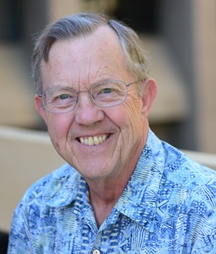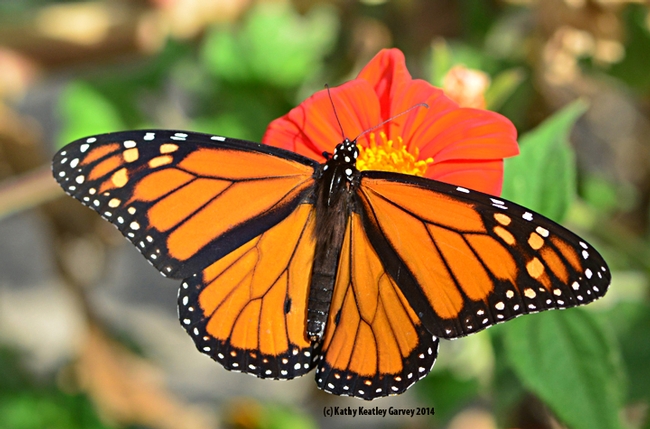
For years we've marveled at the migrating whales passing Point Reyes as we stood glued to our binoculars.
And we've expressed awe that a bird--a plover--makes nonstop flights over the central Pacific Ocean from Alaska to Australia and New Zealand.
Amazing. Nothing short of incredible, especially when you consider that many homo sapiens can't find their way out of a parking lot.
They're all on the move. But how many of us have seen the lesser known migrants, such as winged aphids, ballooning spiders, mites, locusts, pelicans, grasshoppers, and armyworm moths, on the move?
Enter Hugh Dingle, an emeritus professor of entomology at the University of California, Davis, and a worldwide authority on animal migration.
Dingle, who was featured in National Geographic's cover story on "Great Migrations in November 2010 and interviewed by LiveScience for its November 2010 piece on “Why Do Animals Migrate?", has just published the second edition of his book, Migration: The Biology of Life on the Move (Oxford University Press), a sequel to the first edition published in 1996.
The full understanding of migration, or “life on the move,” involves genetics, physiology, and morphology, as well as behavior and ecology, Dingle says.
"The program or syndrome includes specific modifications of metabolic physiology like enhanced fat storage to fuel migration and of sensory systems to detect inputs from the sun, stars, and magnetic field lines to determine compass direction. Intimately involved in the latter are daily and yearly biological clocks. The pathway followed is an outcome of the syndrome of migratory behavior and is part of the ecology that provides the natural selection acting to determine the evolution of migration.”
Not all migration is a round trip; sometimes it's one-way, Dingle says. “Important defining behavioral characteristics are specific departure and arrival tactics and the refusal to stop even in favorable habitats until the migration program is complete,” Dingle says. “In the words of National Geographic reporter David Quammen migrants ‘are flat-out just gonna get there.'"
Why is it important to understand the biological basis of migration and its evolution? “Because migration is so widespread and because migrants have such impact on both natural and man-altered ecosystems,” says Dingle, who achieved emeritus status in 2003 after serving on the faculty of the UC Davis Department of Entomology (now the UC Davis Department of Entomology and Nematology) from 1982 to 2002.
In his book, Dingle covers the interaction between behavior and outcome. Another important focus: he covers the relation between migration and life histories, including the evolutionary genetics of the relationship. Long-distance round-trips, for example, require long lifespans, hence most insects, although not all, migrate only one-way.
“Natural selection acts differently on long versus short lives," Dingle says. "With long lives there are usually many opportunities to produce offspring; with short lives there may be only one. Thus reproductive opportunities may determine when and where to migrate. Migrating aphids postpone reproduction until they colonize new host plants; birds reproduce following migration in the spring, but not in the fall. Some birds and insects use migration to exploit ‘rich patches' and breed in different places in different years or even in the same year."
Dingle, former secretary of the International Society for Behavioral Ecology and past president of the Animal Behavior Society, says he wrote the book for "students of migration and for those biologists who are generally interested in the functioning and adaptations of whole organisms."
Dingle is a fellow of the American Association for the Advancement of Science and the Animal Behavior Society. His research has taken him throughout the world, including the UK, Kenya, Thailand, Panama, Germany and Australia.
In some respects, he, too, migrated.
Attached Images:
